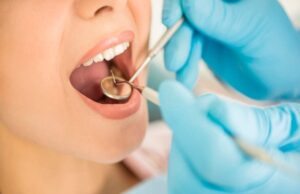Orthodontics is a specialized field of dentistry that focuses on the diagnosis, prevention, and treatment of misaligned teeth and jaws. As per Dr. Kami Hoss, while many believe that orthodontic treatment is only for cosmetic purposes, it can also have considerable benefits for one’s oral health and overall well-being. As per the American Association of Orthodontists (AAO), kids must have their first orthodontic consultation by the age of 7. At this age, an orthodontist identifies any potential orthodontic issues and determines if early intervention is required.
Dr. Kami Hoss briefly talks about when should children visit an orthodontist
People typically visit an orthodontist whenever there is a question about the alignment of the teeth or the bite. Crowding or rotated teeth are some of the most obvious signs that a visit to an orthodontist is necessary. Crowding and rotated teeth are both common orthodontic issues that occur when there is not enough space in the jaw for the teeth to align properly. However, there are also certain orthodontic issues that are not too obvious. Hence, most pediatric dentists recommend an orthodontist evaluation by the age of seven.
By the age of seven, a child already has the permanent first molars and some permanent front teeth. In case this does not happen, the child may have an issue with the development of the teeth. The development and eruption of teeth tend to differ significantly among individuals, which makes it essential for children to undergo an orthodontic evaluation to assess whether their dental growth is progressing normally. Even though most children may not require immediate orthodontic treatment at a young age, early detection of potential dental issues can play a vital role in preventing more serious complications down the line.
As Dr. Kami Hoss points out, in addition to managing issues related to dental crowding, orthodontists are also trained to identify and correct bite problems early in a child’s development. One of the most commonly observed bite issues in children is a crossbite. A crossbite occurs when the upper teeth sit inside or behind the lower teeth rather than overlapping them as they should. If left unaddressed, a crossbite may lead to the asymmetrical development of the jaw and, in severe cases, permanent deformation of the lower jaw. Such misalignment not only affects the structure of the face but can also result in premature wear of the permanent teeth. In extreme cases, surgical intervention may be necessary to correct the issue. To prevent such outcomes, orthodontists may recommend the use of appliances such as a palate expander or an upper retainer, which serve to widen the upper jaw and guide its growth forward, helping to correct the crossbite during a critical stage of development.
Overbite is another concern that orthodontists help manage. In contrast to a crossbite, an overbite presents a different challenge. This condition may arise when the upper jaw develops faster than the lower jaw or when the front teeth protrude excessively. Addressing an overbite at an early age offers numerous benefits, like improved chewing function, enhanced speech clarity, and a more aesthetically balanced facial appearance. Moreover, early treatment helps protect protruding front teeth from potential injury.



